Author: George Mitchell
We often use Moose Jaw as our stopover on our Cross-Canada road trip. It is a quiet town with little traffic and worth a visit for at least a day. You can enjoy the magnificent murals on the back or side of many buildings, go on an Al Capone bootleg tour, the Tunnels of Moose Jaw, visit Mac the Moose and Sue the Snow Bird, enjoy the 1920s architecture, and stop for coffee or food along the streets.
Welcome to another episode in our 19,000 km road trip across Canada. At the end of this post are some itinerary planning tips and the map link.
Bread Basket of Canada
Imagine an area that is a bit smaller than Texas or Germany and Poland combined, that is nearly totally flat. It was leveled by the biggest bulldozer in history. During the ice ages, the Laurentide Ice Sheet was almost three km (two miles) thick and covered North America from the Canadian Arctic to Missouri.
Saskatchewan (SK) is the bread basket of Canada. It is the largest producer of wheat in Canada, which is the 5th largest producer in the world. It is worthwhile to stop and take a picture of just how flat SK is.
Canola (an abbreviation for “Canadian oil”) is a Canadian invention developed by breeders in Saskatchewan and Manitoba during the 1970s. Canola has better nutritional quality than trans-fat and is one of the healthiest oils present in the marketplace.
Canola is not only gold in colour; it is a golden crop. The province also has two “golden” minerals – potash and uranium. SK has the largest potash industry and the second largest uranium production in the world.
Regina
Regina was originally called Wascana (“buffalo bones”) by the Cree. It was renamed Regina (Latin for “Queen”) in 1882 in honour of Queen Victoria by Queen Victoria’s daughter Princess Louise, wife of the Governor General of Canada. Besides being a very early feminist, she is best known for the name of Lake Louise!
SK is also the home of the New Democratic Party (NDP). Its leader, Rev. Tommy Douglas not only became premier of SK but introduced Universal Health Care to SK in 1962. If you think you don’t have any connection to Saskatchewan, think again. Tommy’s grand kids include actors Shirley Douglas and Keifer Sutherland!
Saskatchewan Legislature
We like to stop at the Beaux Arts style Saskatchewan Legislature built in 1912. Manitoba Tyndall Stone adds to the building’s grandeur. The table that was used during the meeting of the Fathers of Confederation in Quebec City in 1864 resides in the building’s library.
Queen Elizabeth II Gardens
We spend a little bit of time enjoying the flowers in the garden and Wascana Lake in front of the building. In the middle of the garden is an equestrian statue of Queen Elizabeth II on her favourite horse, Burmese, a gift from the RCMP. Queen Elizabeth II came to Canada 27 times.
The other tradition when we visit Regina is to head to Milky Way for the best ice cream (Google rating 4.7, at 910 Victoria Ave. open 11:00 to 21:30 hrs).
Moose Jaw
Welcome to Mac the Moose, the biggest moose anywhere. The sculpture built in 1984 is right next to the tourist bureau. Norway’s Big Elk tried to take away the title but in 2019, taller antlers were placed on top of Mac the Moose to regain the crown.
Canada Mosaic 150
Don’t miss the Canada Mosaic 150 on the outside of the tourist bureau. It was a special project to celebrate Canada’s 150th birthday. Each individual tile represents a train car, carrying an object that symbolizes one of the 150 communities across Canada. Moose Jaw built a special mosaic centred around a rail car carrying a Snow Bird acrobatic jet.
Sue the Snow Bird
Sue the Snow Bird (my nickname) is a CT-114 Tutor airplane. This Canadian-built jet was used by the Royal Canadian Air Force (RCAF) as a basic pilot-training aircraft from 1963 until 2000. The RCAF acrobat flying team is called the Snow Birds. How did it get that name? It was invented by a Grade 6 student who won a “Name the Team” contest held at the local elementary school in 1971!
The Snow Birds are based in Moose Jaw and are a joy to watch. Nine planes fly in formation with about 1.8 metres (5.9 feet) between each other!! Imagine the skill needed to maintain this distance while flying at speeds of 595 km/hr (370 mph)! They perform at approximately 60 air shows at 40 different locations across North America.
Canadian Contributions to Aviation in World War II
Moose Jaw is a NATO jet flying training centre. The Flying training program was established in Canada during World War II. During World War II, Canada trained 131,553 airmen, of which about half were Canadian. This program continues today.
A little known fact is that Canada was the fourth largest air force in World War II and played a significant role during the war, especially defending the United Kingdom during the Battle of Britain.
Little Known Facts
Canadian scientists developed microwave-based radar and the Plan Position Indicator, the typical rotating circular radar screen, still in use today. During the war, Canadians also invented:
Electro-thermal De-icer used to prevent ice build-up;
G-suit enabling pilots to withstand forces 8 times that of gravity;
Nylon Parachutes providing means to evacuate airplanes;
Windshield Fluid developed for military vehicles and used by all of us today.
Buildings of Moose Jaw
Moose Jaw is a typical small town Canada. It’s quiet with low traffic and easy parking, but you have to walk if you want to save on parking fees.
The Hammond Building at 310 Main Street is an example of innovative and eclectic style that characterizes the architecture of small town Canada. Note the terra cotta tiles embedded in the brick façade. There is an extensive use of rope moldings, geometric patterns, polychrome blocks, and ornate friezes.
There is a sordid side of this building. American-born organizers of the Klu Klux Klan sought to extend its reach into Canada and set up shop in the Hammond Building in 1926. Efforts in most other provinces were a failure, but in Saskatchewan the Klan found somewhat more fertile ground for its largely anti-Catholic, anti-immigrant and racist messages. Ironically, in 1930s, the province became the hotbed of the left wing NDP (formerly CCF) party.
The Moose Jaw City Hall (228 Main Street North) is made from fossil-rich Tyndall Stone. Note the four-faced clock and attic with green (oxidized copper) mansard roof. The building uses the Edwardian Classical style, which is a combination of Baroque and Neo-Classical styles. Neo-Classical elements include the Ionic pilasters and dentil (teeth-like) patterns. Baroque elements include alternating triangular and semi-circular pediments.
Murals of Moose Jaw
The pièce de résistance of Moose Jaw are the 47 murals painted all over the downtown area. The city has a walking tour/map called the Murals of Moose Jaw. If you really like art, then you can easily spend a full day or two exploring Moose Jaw. The following is a subset of murals that we found the most interesting and I will use the same mural names and numbers as found on the tourist map. Note that many of the murals are on the backs or sides of the buildings.
1. Cruising Main Street
You have to go down the lane behind the Mae Wilson theatre (217 Main Street North), which used to be the Capital Theater Building. This mural shows Moose Jaw’s Main Street in the 1920s. What makes this mural special is the addition of three dimensionality. Two sculptures emerge from the side of the building, one is peering out of a faux window.
46. Capital Theatre Mural
This mural is located on the north wall of Cultural Centre (on Fairford St.). It depicts a ticket for the Capital Theatre using a lineup of beauties. Some things never change.
34. Dancing on River Street
This colourful mural (north wall of 21 Fairford Street East) depicts the exciting nightlife of the Roaring 1920s. This is the period of bootlegging in the Tunnels of Moose Jaw.
5. Stormin’ Main Street – 1883
This mural is located on the east wall of 44 Fairford St. W. It show a dramatic perspective of Main Street just as a prairie storm is about to hit. This road was closed to traffic and house many picnic benches.
14. Hopes and Dreams
This is a bas-relief showing a pioneer wagon loaded with supplies to set up a homestead circa 1882. It was quite amusing that a sign underneath states “Police vehicles only”. The bas relief is on the police station.
Tunnels of Moose Jaw
The tunnels were built to carry utilities but were later abandoned. Chinese immigrants hid in the tunnels to avoid paying the extortionist “Head Tax”. The Chinese originally came to prospect the Gold Rush that Changed History in 1862 and to build the trans-Canada railway in 1885. The government wanted them to leave Canada and charged a $100 to $500 ($16,000 today) tax if they wanted to immigrate.
The Al Capone mural is located on the side of the Cornerstone on Manitoba St. West. When Prohibition started in 1920 in the USA, it was being repealed in Canada. In 1893 the Soo Railway Line from Chicago was linked to the Canadian Pacific Railway (CPR) at its depot in Moose Jaw. Regina only became a major city when the province was created in 1905.
During Prohibition the tunnels were used for the bootleg industry. From here the liquor would be smuggled in the USA on the Soo Line, thanks to the tunnels’ proximity to the railway station. Under the reign of the city’s corrupt police chief, many speakeasies and brothels opened up shop. The Tunnels of Moose Jaw provides three tours but the Chicago Connection and Passage to Fortune are the most relevant. Located at 18 Main St N, it is open all year but from Jun 1 to Aug 31 it is open daily 9:30 to 17:30 hrs. The fee is $13 children, $18.50 seniors, and $22 adults.
Where to Go Next?
The buildings and murals in this post are shown on the Prairies Itinerary Map. Expand two hidden layers to see Accommodation and Restaurants.
As the sun sets on Saskatchewan, it’s time to head west. I have no idea how the second sun ball occurred.
Driving Distances and Times
Using Moose Jaw as the stopover allows you to drive one more hour that you save on driving the next day. The driving routes are shown on the Prairies Itinerary Map.
- Winnipeg to Regina is 574 km 6 driving hrs, which makes for a short day.
- Regina to Moose Jaw is another 71 km or 50 min.
This reduces the time to get to either Brooks or Calgary, Alberta when you continue west. Moose Jaw to Brooks is 504 km 5:00 hrs. What’s at Brooks? It’s one of the most important sites in Canada and subject of a future post.
After Brooks and Calgary, the next destination is the:






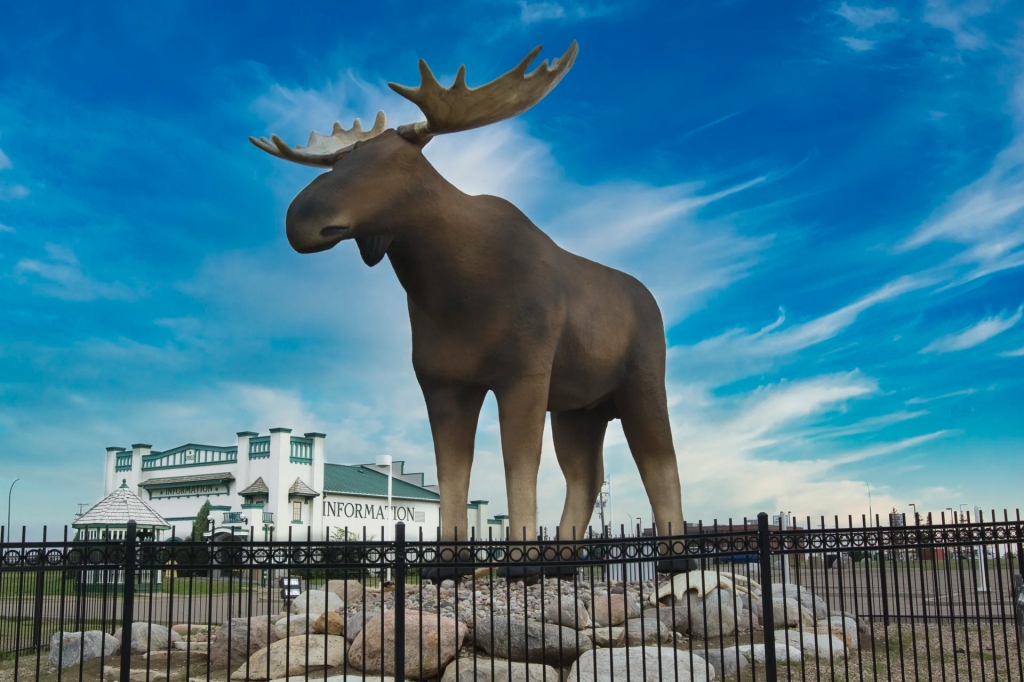
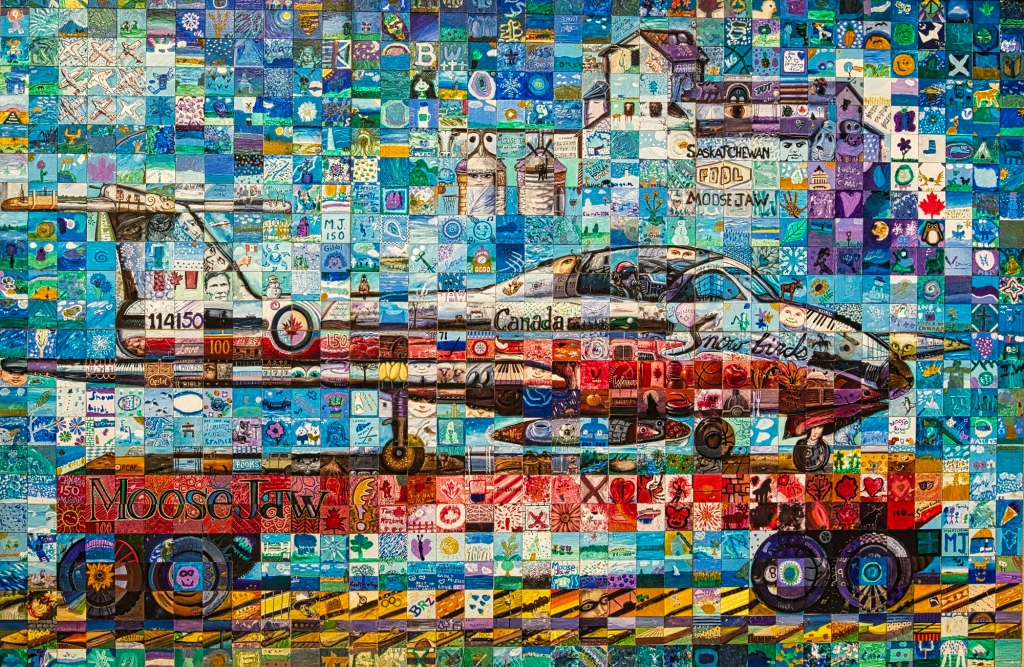

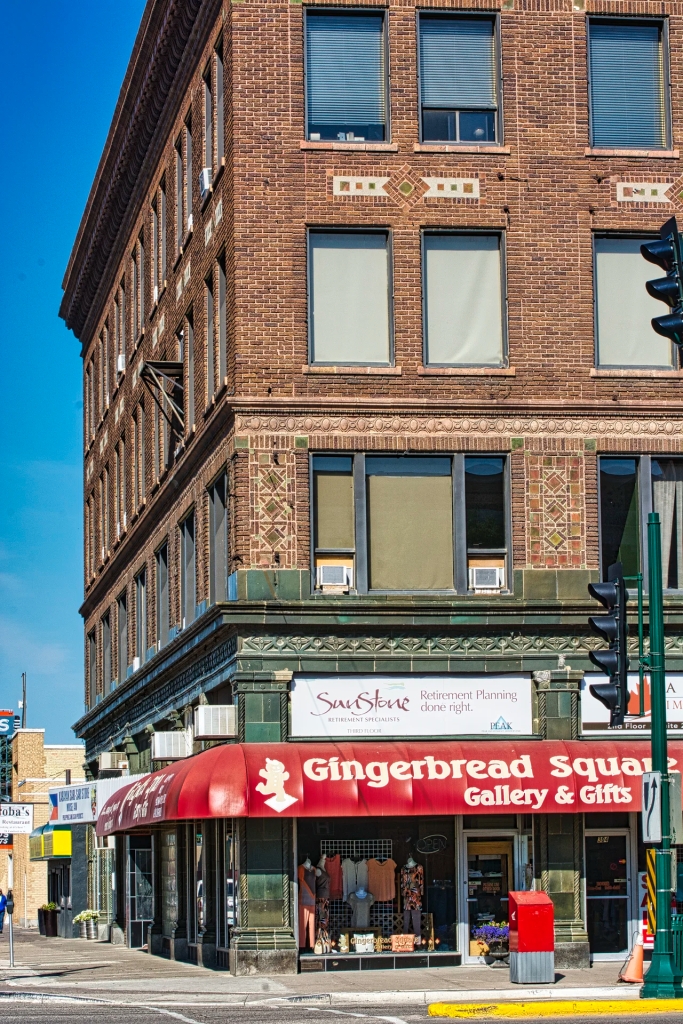

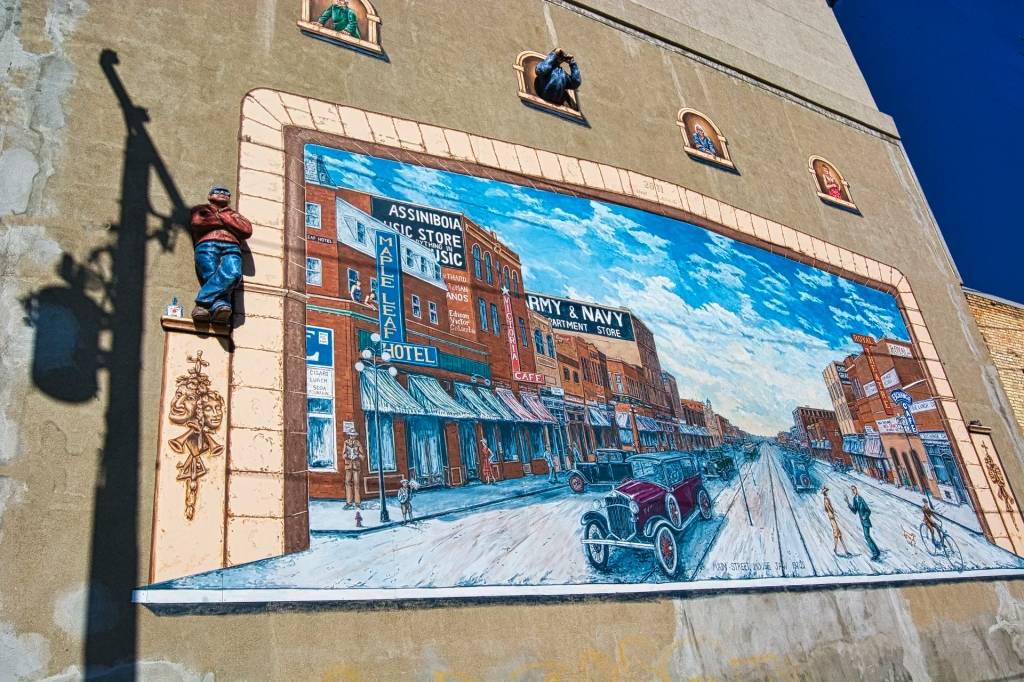


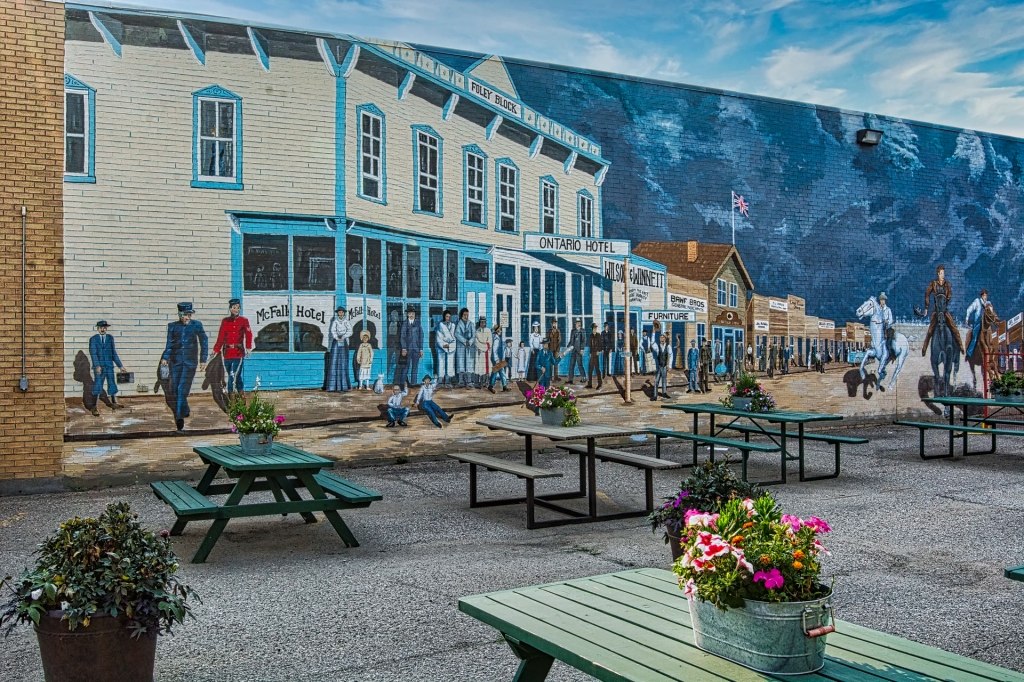


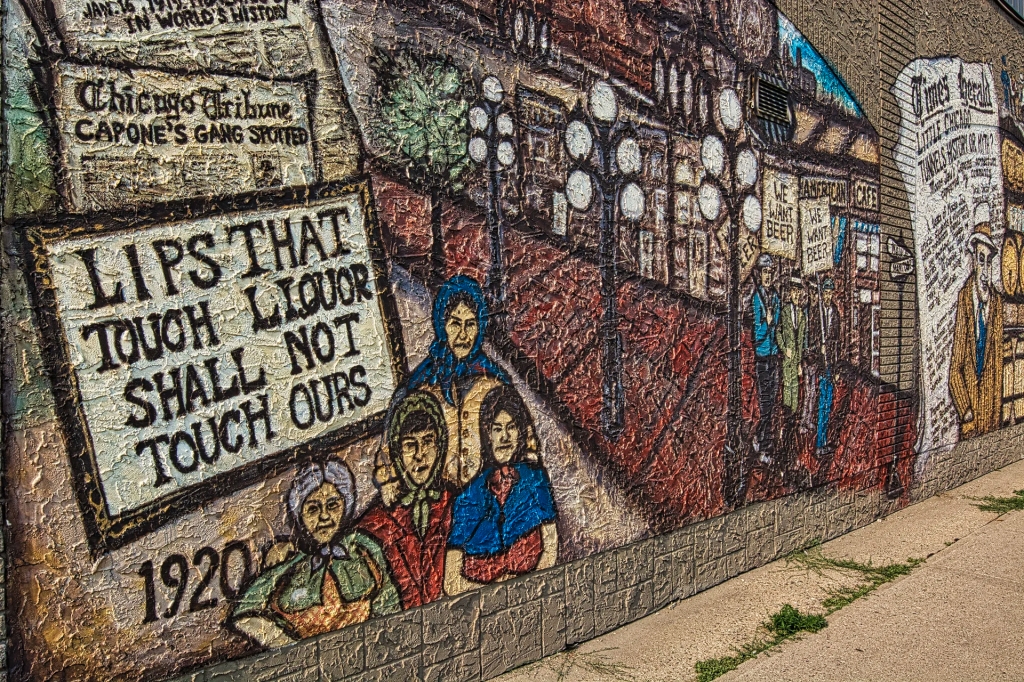
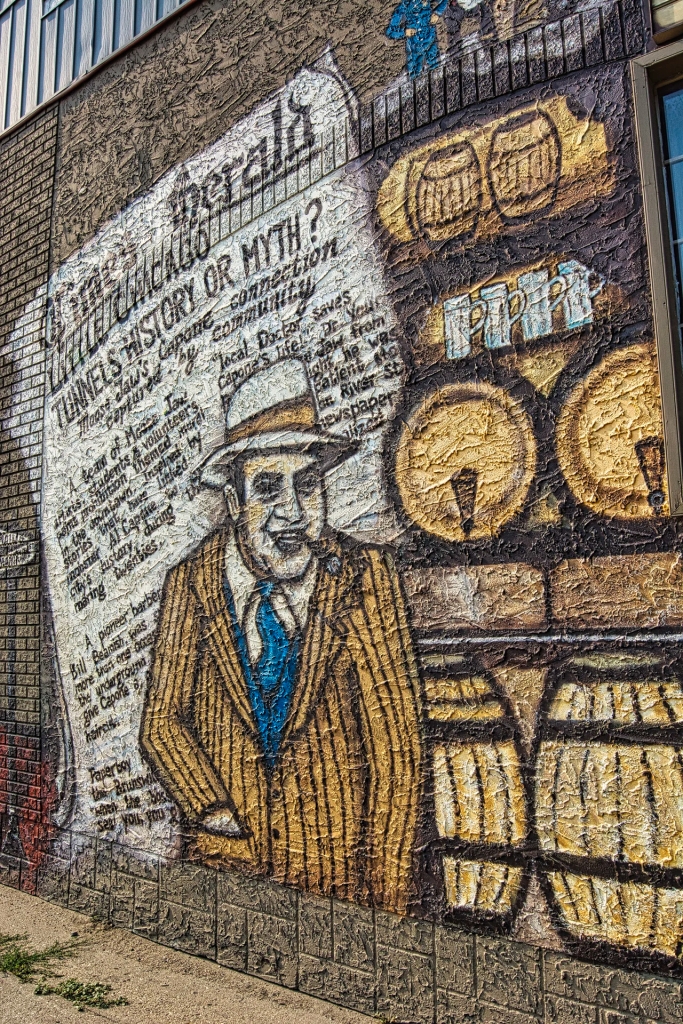

One thought on “11 Moose Jaw Saskatchewan Sights Worth Visiting”